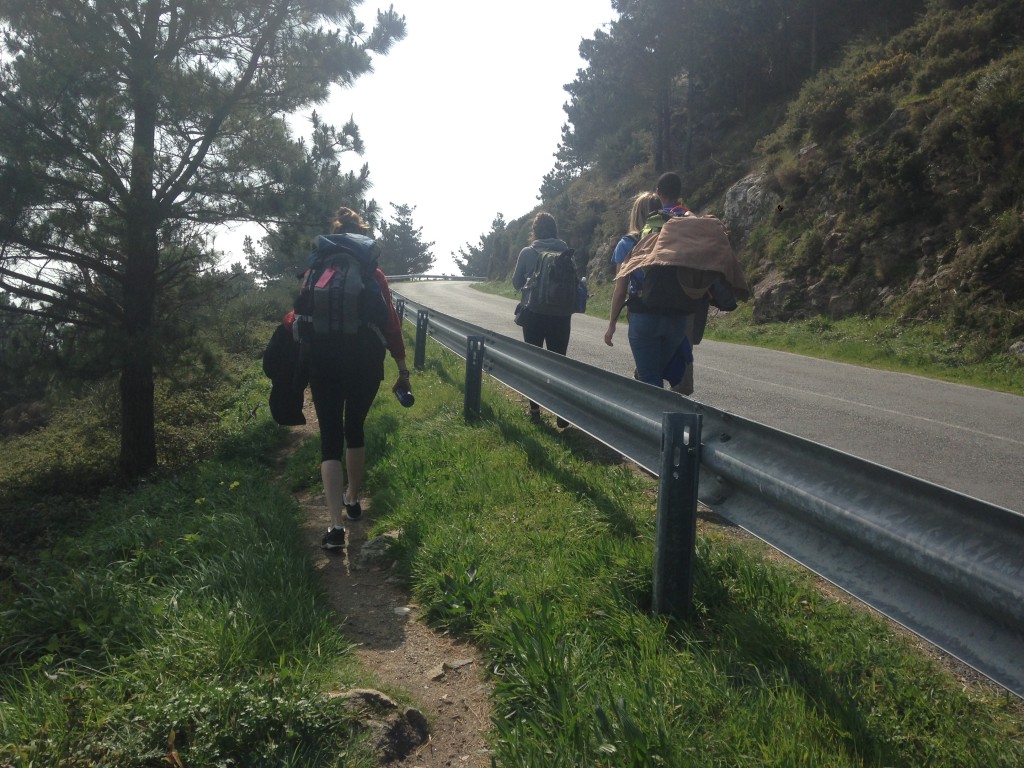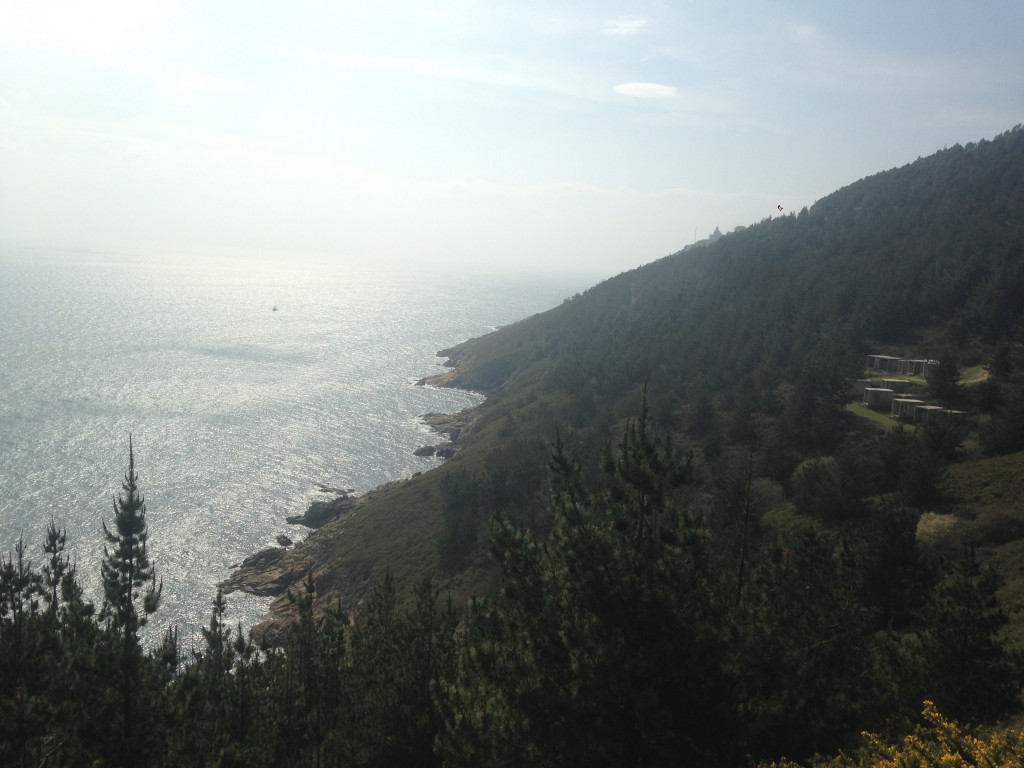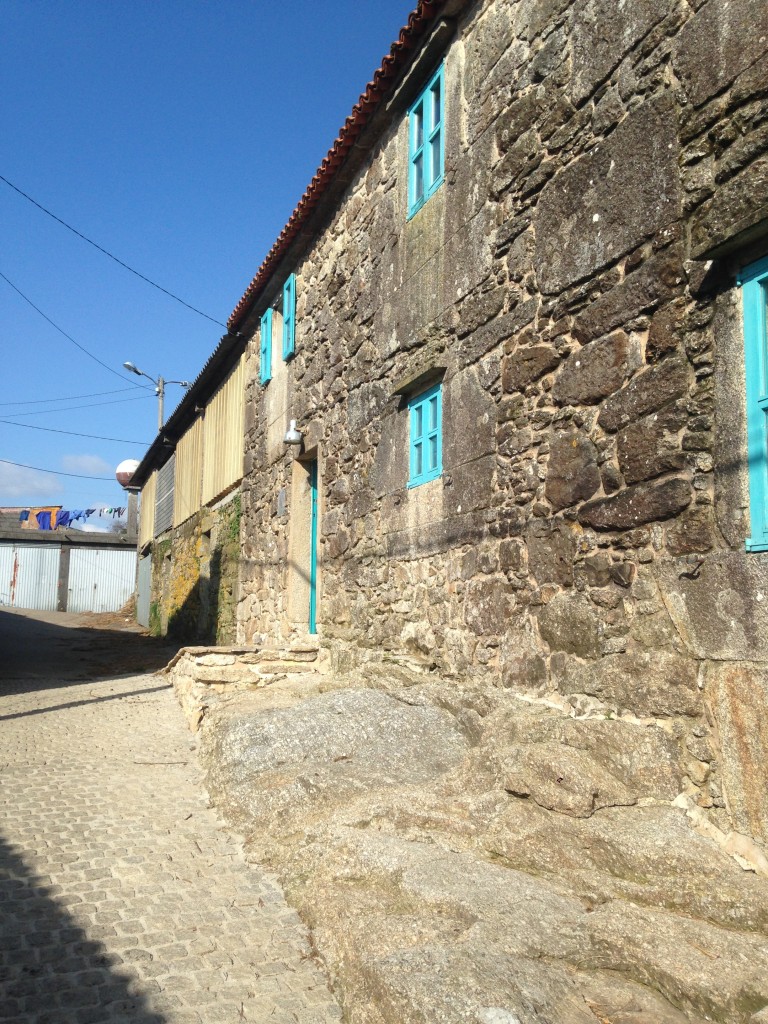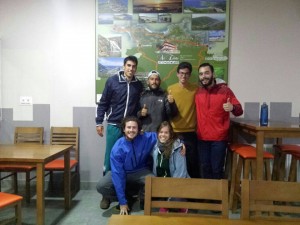Where are we sleeping tonight? Are we even on the right trail? Will we find a place for lunch? Three very important questions, yet three questions that we all knew not to ask while walking El Camino, because oftentimes, no one had the answer. Fortunately, El Camino provides.
Four of my friends and I decided that we were going to walk 90 kilometers over 4 days on El Camino de Santiago. El Camino is a walking trail that runs from France across northern Spain and ends in Santiago de Compostela, a charming town in the province of Galicia, Spain. The trail continues to the western most point of Spain, Finisterre, and ends at the Atlantic Ocean. We decided we were going to walk the trail backwards from Finisterre and end at Santiago, because it was the perfect distance for a 4-day trip.
 |
| The four of us beginning our walk. |
Finisterre was breathtaking. We looked out over the Atlantic, and imagined the thousands of Spanish peregrinos (pilgrims) who have shared our view. Many of their shoes, socks, clothes were burned in a pile at the base of a Cross, as it was tradition to burn something you had worn for the many months of walking the trail. We then set off. We had all the essentials – pack, walking shoes, water, energy bars – but we did not have a map. All we knew was the name of the town we needed to get to that night and we would follow the conch shell trail posts to get there. Sounds easy enough.
 |
| Finisterre, the westernmost point of Spain. |
After 3 hours of walking the first day, we arrived at our first albergue, which is essentially a large open space with an abundance of bunk beds made for pilgrims. The second day of walking was another 4 hours through the wind and rain, in and around hills, through Spanish countryside. We arrived at our second albergue and met pilgrims from all over. 2 Germans, a Danish/French chef who made us delectable pasta, and 4 Spaniards. Samuel, a 43-year old man from Barcelona who has done the trail 7 times over 2 years. He carries nothing but a small pack, and a few hard-boiled eggs that he eats while he walks. And Matthias, who walks about 8 hours per day everyday and finishes the trail in half the time it takes a normal pilgrim.
 |
| A typical Albergue for pilgrims on El Camino. |
The takeaway message from this adventure is El Camino provides. When we were tired and looking for a break, the trail opened up to a secluded beach with rock outcroppings on which to relax and a mound of opened candy and lemonade bottles in the sand (most likely expired). When we couldn’t get traction on the uphill climbs, perfectly sturdy sticks appeared in the field next to us and we claimed them as our walking staffs. El Camino provides.
El Camino also provided a new friend. Ferran, a Spaniard from Valencia, with whom I shared some great conversation about his life in Spain as a 20-year old university student. We shared many laughs, and hopefully he will come to visit the United States someday. What Ferran told me definitely rang true as we went our separate ways the next day: “Las amistades inesperadas son los más disfrutadas.” The unexpected friendships are the ones you enjoy the most. Thanks, Camino.
 |
| Ferran in the yellow, and the other Spanish friends from the trail. |
Danny Pasternak is the Spring 2015 CEA MOJO Blogger in Madrid, Spain. He is currently a junior at the University of Michigan.







